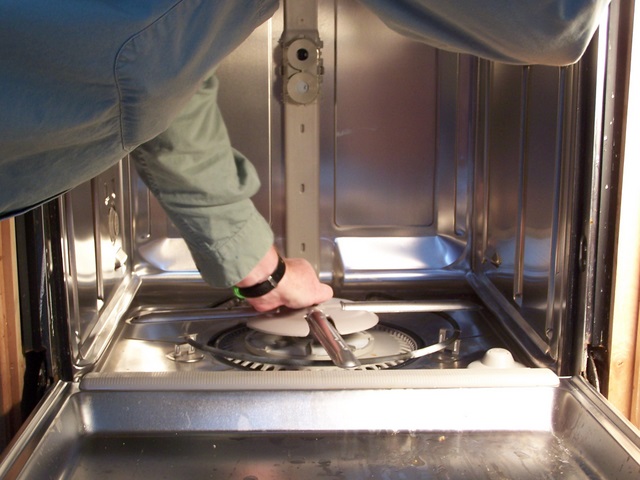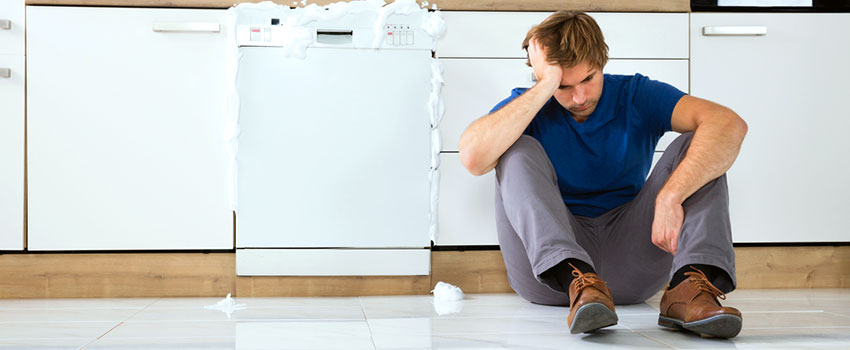Preparing for Your Dishwasher Installation: 6 Important Steps to Follow
Preparing for Your Dishwasher Installation: 6 Important Steps to Follow
Blog Article
In this article down the page you might get a lot of exceptional answers in regards to What to Know Before Installing a Dishwasher.

Dealing with a brand-new dishwasher right into your house is no small joke, specifically if you're buying the machine online. Certainly, we suggest that you work with your plumber due to the fact that they are professionals at dishwasher setup. Plus, we have actually done this before so we can avoid small mistakes that can create a lot of pain over time.
The 6 hacks will make your dish washer setup as seamless as feasible.
Find the electrical source
Prior to inviting your plumbing technicians over, make sure that there is a power electrical outlet close to your recommended dishwasher area. If there isn't, you may require to run a wire to that place. These tiny mistakes can make or mar your experience, so you would certainly do well to examine in advance.
You can utilize this opportunity to examine that your kitchen has an independent control to make sure that you can shut off the kitchen area's power at once while taking pleasure in power in the remainder of your house. This straightforward fixture can stop multiple mishaps and also save you some money.
Make certain the components are complete
If you're getting a cheap dishwashing machine, opportunities are that the parts aren't complete. You can inspect the details offered concerning the item to confirm. If it isn't, you might require to go shopping for parts with your plumber. Look for an intake hose pipe, a power cable or even a steam nozzle.
There is a significant opportunity of purchasing dissimilar components, so consult someone with a great deal of experience, to put it simply, your emergency plumbers.
Check your water shut-off shutoff
Your dish washer will certainly have its own connection. It might be attached to your cooking area sink's supply, or it might have its own components from your primary. Nevertheless, you require to understand that you can manage the water that provides your brand-new dishwasher.
While preparing for the setup, shut off all links to the cooking area. This can prevent accidents as well as disruptions.
Examining your shut-off shutoff prior to your plumber gets here can additionally stop you from unexpected spendings because you can't link a new dishwashing machine to a malfunctioning shut down shutoff.
Additionally see to it that there are no cross links that can stop your dish washer from fuming water.
DEVICES
Obtain the appropriate dimensions.
It is very crucial that your dishwashing machine suits completely with the rest of your cooking area home appliances. Before you position an order for the dishwasher, take a measuring tape and action front the top of the kitchen area table to about an inch off the floor. This is a common error lots of people make. If you determine from the top of the table to the floor, your dishwasher might be an inch higher than the table when it gets here.
Also, take the protrusion into account. European as well as American dish washers have different densities, so constantly consult your plumber.
Discuss placing.
The best place to fix your dish washer is right alongside your sink, or listed below it. The further your dish washer is from your sink, the less useful the style. If you have any type of aesthetic objectives for your dishwashing machine, talk to your plumber about them. Constantly interact with your plumber.
How To Install A Dishwasher
Installing A Dishwasher Yourself
Just like other home appliances, a dishwasher helps to make chores less time-consuming and free of hassle. Most modern kitchens have a dishwasher or a cabinet space for dishwasher installation built into them. An older kitchen with no dishwasher or cabinet space for one might require a little reconstruction to accommodate dishwasher installation.
Installing a dishwasher requires basic knowledge of plumbing and electrical wiring. This article contains the steps involved in dishwasher installation, dishwasher installation tips, things to consider when installing a dishwasher in a kitchen that previously had no dishwasher in it, and tips for maintaining a dishwasher.
Step One: Gather the Necessary Supplies
Gather all the required items and keep them near the installation site for easy reach. The materials and tools you will require include the following:
A screwdriver • A hose clamp • Duct tape (optional) • A brass fitting • Teflon tape • A pair of pliers • An adjustable wrench • A drill • Braided steel water line • A pair of rubber hand gloves (optional) • Wire nuts Take Safety Measures
First, turn off the power socket and unplug the power cord if it is a plug-in dishwasher. Then, proceed to turn off the circuit breaker. Next, turn off the hot water shut-off valve under the kitchen sink and run the tap to ensure the water supply is shut off. Protect your kitchen floor close to the installation area with an old rug or a piece of drop cloth.
Remove the Old Dishwasher
This step only applies if your kitchen has an old dishwasher that you want to replace. Remove the cabinet door to gain complete access to the old dishwasher. Next, remove the cover of the access panel located at the bottom front side of the dishwasher. Locate the junction box inside the access panel.
Now, unscrew the terminal screws holding the wires in place at the junction box. Then, remove and tuck the wires out of the way with duct tape. Locate the dishwasher water inlet tube, undo the brass fitting and disconnect the water supply pipe from it. Put the disconnected end of the water supply line pipe into a bucket or bowl to collect any water remaining in it.
Reach down beneath the sink to undo the drain hose. Loosen, then clamp and disconnect the drain hose of the dishwasher from the tailpiece of the sink. Next, put the disconnected end of the drain hose into a bucket to collect the water and debris.
With all the connections out of place, remove the screws holding the dishwasher in place with a screwdriver, gently pull the dishwasher out from the cabinet and set it aside. You can use a piece of cloth or towel to clean up the mess made or any water spillage on the floor. Also, clean the cabinet where the old dishwasher was before installing a new one.
Skip this step if you are having a dishwasher installed for the first time in your kitchen.
Install the New Dishwasher
Carry your new dishwasher unit close to the area of installation. Unpack it and go through the user manual. Lay the dishwasher on its back so the bottom is exposed and accessible.
Connect the Water Supply
Wrap Teflon tape on the tip of the water inlet pipe located at the bottom of the dishwasher. Screw on the 90 degrees brass fitting to the taped inlet pipe and tighten it with an adjustable wrench. Most dishwasher units do not include a brass fitting, but they are available at hardware stores.
Once you have the fitting, connect the new water supply line to the elbow of the brass fitting. Pass the other end of the waterline through one of the cabinet holes and place it on the floor beneath the kitchen sink.
Attach the Drain Line
Locate the dishwasher drain standout pipe, connect the drain line to the dishwasher, and secure the connection with a hose clamp. Pass the other end of the drain line through the cabinet hole and place it towards the sink drain tailpiece.
Slide the Dishwasher into Place
Attach the adjustable legs to the front of the dishwasher. Carefully slide the dishwasher under the countertop into the cabinet. Stop halfway and ensure everything is in a good position before sliding it in completely. Finish hooking up the water line by connecting the other end to the dual shut-off valve located under the kitchen sink.
Proceed to connect the drain hose through an air gap to your garbage disposer, if you have any, or to the drain tailpiece of your sink. If you do not have an air gap, make a high loop with the drain hose before connecting it to the garbage disposal or the sink drain tailpiece.
Hook-up the Electrical Wires
Remove the cover of the access panel and unscrew the cover plate of the junction box. Connect the wire from the circuit breaker to the wire at the junction box. Next, connect the white wire to the white wire at the junction box, the black to the black, and the green wire to the ground wire.
Use wire nuts to secure the connection tightly in the junction box. Screw back the cover plate of the junction box and close the access panel. Skip this step if your new dishwasher has a power cord wired to it at the manufacturing factory.
https://www.movementplumbing.com/blog/how-to-install-a-dishwasher

I was made aware of that editorial on How to Prepare for Your Dishwasher Installation from a good friend on our other site. Sharing is good. You just don't know, you might be helping someone out. Thanks a bunch for your time. Kindly come visit our blog back soon.
Check This Out Report this page